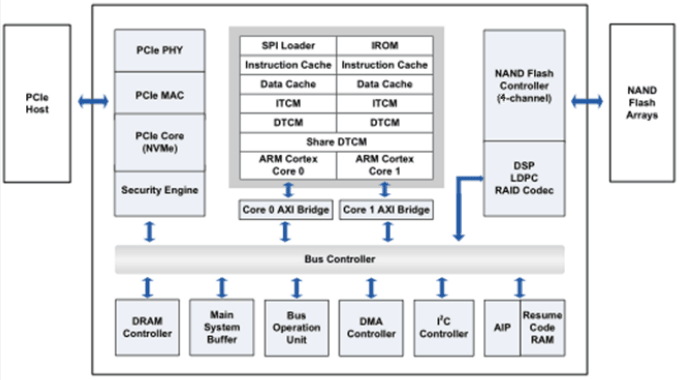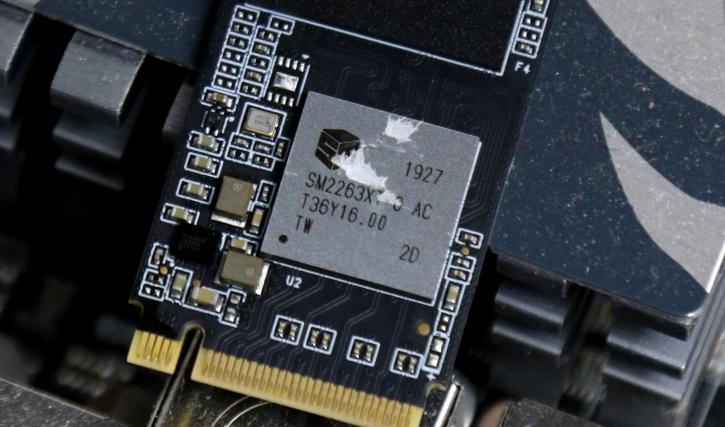Specifications & Features
Specifications & Features
Lexar is now offering three versions of the more NM610 (250GB, 500GB, and 1TB). For endurance, our tested 1TB model has been rated at 500 TBW. The NM610 series will be fitted with TLC written 3D NAND flash memory (vertically stacked). This allows the company to offer the proper storage volumes.
| Type | Solid State modules (SSM) |
|---|---|
| Form factor | M.2 2280 |
| Interface | M.2/M-Key (PCIe 3.0 x4) |
| Read | 2100MB/s |
| Write | 1600MB/s |
| IOPS 4K read/Write | 188k/156k |
| memory modules | 3D-NAND TLC, Micron, 64 Layer (Generation 2) |
| TBW | 500TB |
| Reliability prediction | 1.5 Mio. hours (MTBF) |
| Controller | Silicon Motion SM2263XT, 4 channels |
| Protocol | NVMe 1.3 |
| Data protection features | not available |
| Power consumption | not specified (maximum), not specified (operation), not specified (idle), not specified (Sleep mode) |
| Dimensions | 80x22x2.25mm |
| Warranty | three years |
So instead of using Planar NAND, 3D NAND is used. 3D TLC NAND is physical vertical NAND cell stacking not to be confused with chip stacking in a multi-chip package. In 3D NAND, NAND layers, not chips, are stacked in a single IC. The good news is continued cost reduction, smaller die sizes and more capacity per NAND chip. Also, installed NAND toolsets in the wafer fabs can, for the most part, be reused, thereby extending the useful life of fab equipment. The NAND ICs are driven by an Silicon motion 2263XT controller, there is No DRAM cache here to be found, but some provisioning, with the help of a smaller SLC written cache.
Controller with Host Memory Buffer
Pricing
I just pulled some numbers from some online e-tailers like Newegg, the MSRP of the 1TB version is set at 149 USD. That is slightly on the high side at 15 cents per GB.



